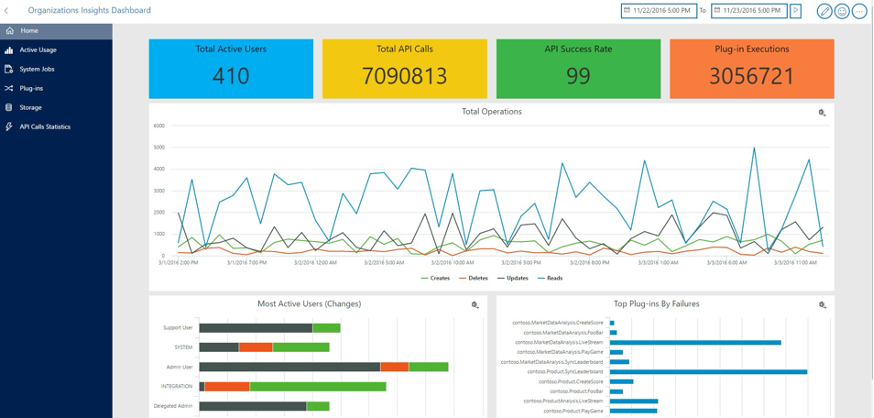You’ve invested months in planning, thousands of dollars in licensing, and countless hours in configuration to launch a new ERP. But your team still heavily relies on old processes and spreadsheets, bypassing the new system, and you’re wondering what can be done to speed up user adoption and see a return on your ERP investment.
This scenario is very common for organizations implementing solutions like Microsoft Dynamics 365 Business Central. The difference between ERP success and failure often comes down to one critical factor: whether your team embraces the system as a valuable tool or sees it as an obstacle to their daily work.
Why Does ERP User Adoption Fail?
Let’s look at the most common challenges that prevent teams from fully adopting their new ERP system:
- Lack of Communication. When employees don’t understand why the change is happening or how it improves their workday, resistance is inevitable. Many organizations focus on the technical aspects of implementation while neglecting to communicate the “why” behind the change.
- Poor Training or Unclear Workflows. Generic training sessions that don’t address specific roles and responsibilities leave users feeling unprepared and frustrated. If people don’t know how to perform their daily tasks efficiently in the new system, they’ll naturally revert to familiar methods.
- Resistance to Change. Adjusting to new systems can feel disruptive, especially when it affects how teams perform their daily responsibilities. Without proper change management, even the most user-friendly system can face resistance from employees who are comfortable with existing processes.
- Overly Complex Setup. An ERP system with overly complex setup and functionality might end up overwhelming users, slowing down the rate of adoption.
Core Pillars of Successful ERP Adoption
Fortunately, with the right strategy, organizations can overcome these initial obstacles through approaches that encourage engagement, reduce resistance, and deliver long-term ROI. Let’s explore the four key pillars of successful ERP adoption:
- Executive Sponsorship
Visible support from leadership sets the tone for the entire organization. When executives actively use the system, communicate its importance, and demonstrate their commitment to the change, it signals to employees that it’s a shared responsibility and essential to the organization’s success.
- User Involvement
The most effective Dynamics 365 Business Central ERP implementation engages end users throughout the process, not just during training. Involving key users in system selection, configuration, and testing helps build internal advocates who feel ownership over the process and can help drive broader team adoption.
- Tailored Training
Effective training recognizes that each role within your organization interacts with the ERP differently. Customized training that addresses specific job functions and workflows helps users feel confident and prepared. Use hands-on, interactive sessions that simulate real-world scenarios to accommodate different learning styles and make employees more likely to embrace the change.
- Clear Communication
Transparent communication about the implementation process, timeline, and expected benefits helps reduce uncertainty and builds trust throughout the rollout. Providing teams with regular updates, hosting Q&A sessions, and encouraging open dialogue ensures users feel supported and more willing to embrace the new system.
Sustaining Success After Go-Live
Launching Dynamics 365 Business Central is a big achievement, but lasting adoption doesn’t happen overnight and takes consistent support in the weeks and months after go-live.
Let’s look at the most effective ways organizations can help employees make the system a part of their day-to-day work:
- Reinforcement Training
Offer follow-up sessions and advanced feature workshops to help users become more proficient and discover new ways to leverage the system effectively.
- Feedback Loops and Support Channels
Create easy-to-access channels where users can ask questions, report issues, and share feedback. Responding to these requests shows teams that they’re heard and keeps them engaged and invested.
- Ongoing System Improvements
Use post-launch feedback and system usage data to guide continuous improvements. When employees see their input driving meaningful changes, it reinforces the idea that the ERP system is evolving with them, not being forced on them.
Metrics That Matter
Measuring user adoption success for an ERP system such as Dynamics 365 Business Central starts with identifying and tracking key usage metrics that provide insights into how well the system is being used.

Title: User Adoption Metrics in Dynamics 365 Business Central
Alt text: A screenshot of Business Central showing system usage statistics, including total active users, API calls, API success rate, and plug-in executions, with visual charts highlighting user activity and top plug-in failures.
- Daily or weekly active users – the percentage of users logging into the system regularly
- Average session duration – the typical length of time users stay active per session
- Feature utilization rates – the frequency of use for specific modules or functions
- Task completion time – how long it takes users to complete key processes
- Support ticket volume by category – the number of tickets submitted, grouped by type
- Time saved per process – measured improvements in process duration after ERP adoption
Setting realistic benchmarks for adoption, such as achieving 70% active daily use within the first 90 days, ensures that the new ERP system gains traction across the organization. These targets help you evaluate progress, identify where support is needed, and celebrate quick wins that build momentum.
Building Momentum After ERP Implementation
Driving successful ERP user adoption requires a focused, people-first approach, one that blends communication, leadership, training, and ongoing support.
Organizations that get the most from their ERP investment focus as much on user engagement as they do on technology. They know go-live is just the beginning, and long-term success comes from empowering users to view the system as a tool that makes their jobs easier.
Connect with EFOQUS today to discover how we can help your team turn an ERP rollout into lasting user adoption.

